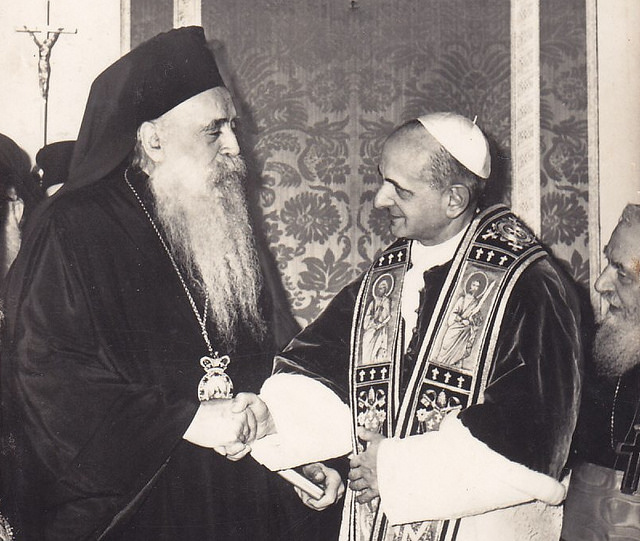

Despite various doctrinal disputes and heretical sects in the third and fourth centuries, for its first thousand years, Christianity was largely a united front. However, a fissure had been slowly growing between East and West. This rift was mostly cultural and political: the East spoke Greek, the West Latin. Eastern bishops were tightly affiliated with the Roman Emperor; the West was more independent. The East had close contact with Islam; the West was mostly shielded from this. Some theological disputes existed, such as the use of the word "filioque" in the Nicene Creed or the proper response to iconoclasm. Finally, there was dispute about the role of the Pope. The West saw the Pope as the leader of the world's Christians; the East recognized the Pope as primes inter pares among bishops, but no more.
Political, cultural, and theological tensions continued to develop and eventually the two Churches split in what is called the Great Schism. The precipitating event took place in 1054 when a Roman cardinal named Humbert of Silva Candida excommunicated the Ecumenical Patriarch Michael Cerularius, who excommunicated him in response. This is traditionally pointed to as the moment the East and West formally separated, although the excommunications actually only applied to the individuals in question, and the average Christian would have been unaware of any split.
The Church in the West became known as the Catholic Church (or often the Roman Catholic Church, due to the Pope's seat in Rome) and the Church in the East became known as the Orthodox Church.